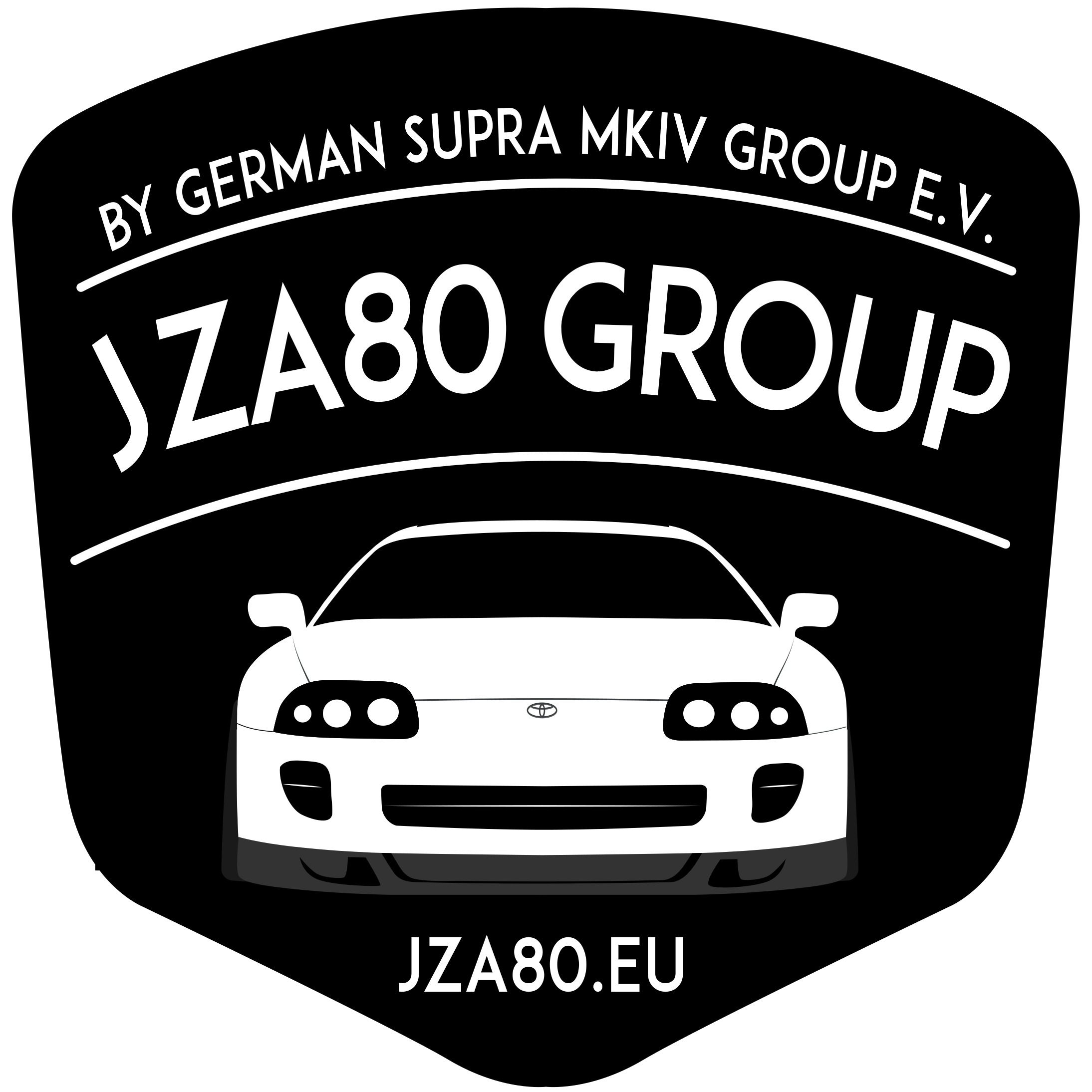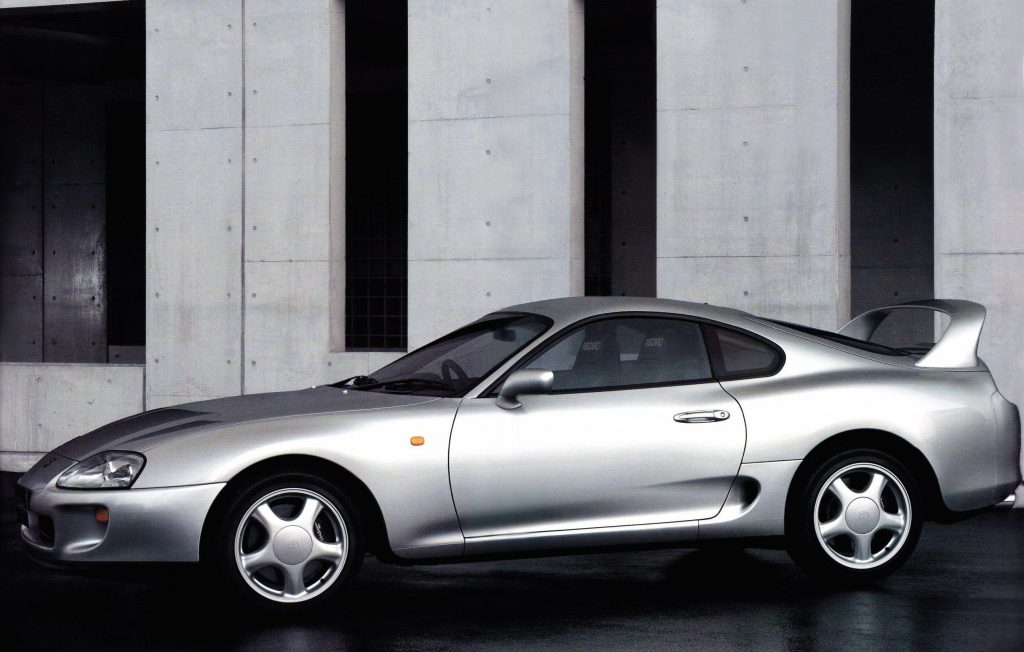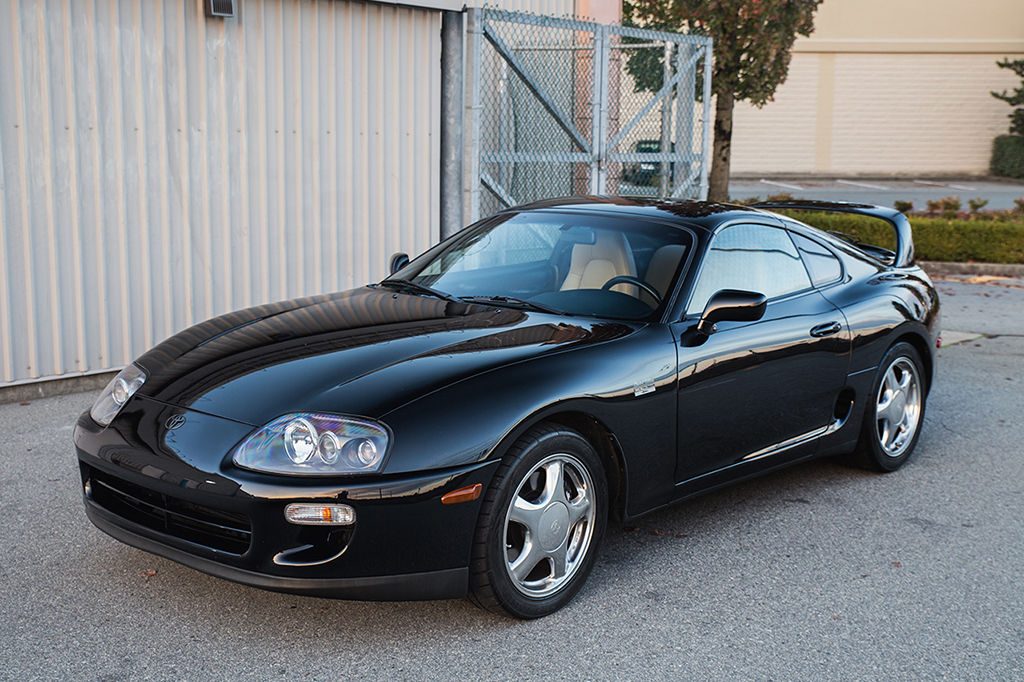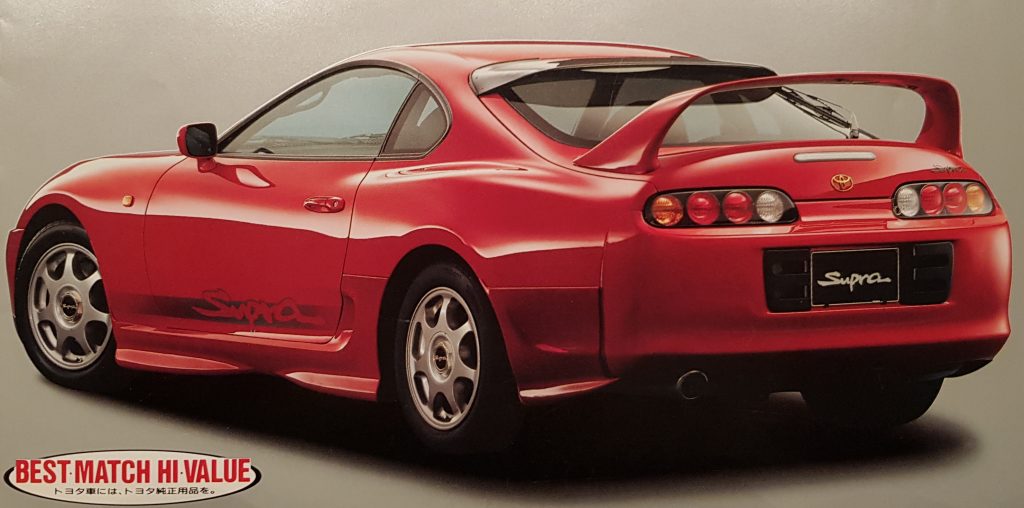J-Spec and Export-Spec 2JZ-GTE Differences

There are certain differences between the 2JZ-GTE engines destined for the Japanese Domestic Market and the North-American and European Market.
| J-Spec | Export-Spec | Impact | ||
| Engine Peripherals | ||||
| Control | less aggressive intake camshaft | more aggressive intake camshaft | Less aggressive camshafts allow the engine to respond faster. | |
| Duration | 224° | 233° | ||
| Valve Lift | 7.88mm | 8.25mm | ||
| Injectors | High Impedance and weaker fuel pump | Low Impedance with series resistor | While increasing boost the smaller injectors cause the engine to run lean earlier. Many third-party ECUs won’t work with high-impedance injectors. | |
| Flow Rate | 440cm³ | 550cm³ | ||
| Air-Flow Sensor | Manifold Absolute Pressure | Manifold Air Flow | ||
| Exhaust Gas Recirculation | Non | EGR available | An EGR causes lower combustion temperatures and soot deposition in the intake manifold. Without an EGR problems at smog-testing may occur caused by too high NOx-Emissions. | |
| Turbo System | ||||
| Turbocharger | CT12b | CT12b | The ceramic turbine is more fragile. It can withstand boost up to 1.2 bar, while the steel turbine can stand up to 1.6 bar. On the other hand ceramic turbines are more responisve. | |
| Turbine Diameter | Inlet/Outlet 60/48mm | Inlet/Outlet 52/44mm | ||
| Turbine Material | Ceramic | Steel | ||
| Compressor Diameter | Inlet/Outlet 62/39mm | Inlet/Outlet 58/39mm | ||
| Wastegate | weaker | Removing the first catalyzer in the downpipe can cause boost spikes. The wastegate used in the J-Spec needs resistance in the downpipe, e.g. a sports catalyzer or a restrictor ring. | ||
| Electronics | ||||
| Traction Control (TRC) | mechanical | Additional intervention in ABS-System via TRAC-Pump | The J-Spec Traction Control does only react on straight roads. | |
| Speed Limiter | Fuel Cut at 180kph (112mph) | Closing the TRAC-Butterfly Valve at 250kph (155mph) | On export vehicles pulling the TRAC-Fuse is enough to delimit the vehicle (don’t do this on Automatic vehicles, it will cause gearbox failures). J-Spec vehicles need a Speed Limit Defender (e.g. HKS or Trust/Greddy). | |
Comparison of J-Spec and Export-Spec Performance Curves
The graphs above show the J-Spec’s and the Export-Spec’s official torque and power curves measured according to DIN-Standards.
The J-Spec’s torque-curve (red) is quicker rising then the Export-Spec’s curve (blue) as a result of the ceramic turbines’ better spooling characteristics.
The blue J-Spec curve peaks at 3600 rpm pushing 431Nm.
The red Export-Spec torque-curve peaks at 1200rpm later, but with a higher output of 441Nm. Those characteristics are caused by the Export-Spec’s inlet camshaft. Inlet Valves close at 50° ABDC, 9° later then in the J-Spec version.
The J-Spec’s torque-curve starts to artificially go down after the peak at 3600rpm. This is due to the Gentlemen Agreement not allowing a power output higher then 280hp. You can notice this by looking at the green J-Spec power curve.






